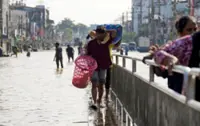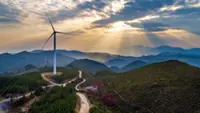A nomadic herder shepherds his cattle flock on a mountain top in the remote Kharnak village in the cold desert region of Ladakh, India, on Sept 17, 2022. Photos: AP
Nomad Tsering Angchuk vows to stay put in his remote village in India’s Ladakh region.
His two sons and most of his fellow villagers have migrated to a nearby urban settlement but Angchuk is determined to herd his flock of fine cashmere-producing goats in the treeless Kharnak village, a hauntingly beautiful but unforgiving, cold mountainous desert.
Already a subscriber? Log in
Save 30% OFF The Star Digital Access
Cancel anytime. Ad-free. Unlimited access with perks.





